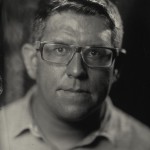Gore Matienzo – Question 2
November 2015
2In what ways is your organization, or your role, radical? In what ways is it not?
Emily Gore
Director of Content – Digital Public Library of America (DPLA)
Mark A. Matienzo
Director of Technology – Digital Public Library of America (DPLA)
Emily
¶ 1 Leave a comment on paragraph 1 0 While the concept of the Digital Public Library of America (DPLA) as a national digital library was not unique—there are a number of national aggregators and service providers, like Europeana, who existed before us—the way we have implemented the DPLA is fairly unique and arguably radical. We started the DPLA with the requirement that all of the metadata contributed by our partner organizations would receive a Creative Commons Zero (CC0) license, and we emphasized the open Application Programming Interface (API) from the start. We did not want to be just another portal without the underpinnings of reuse. We were also fairly radical in our plan to build out content based on geography; our Service Hubs are either state or regionally based. We knew that there were a number of existing collaborative programs that we wanted to build on, and we envisioned that others could be built and existing programs could be made stronger; I think if you ask any of the Service Hubs in the DPLA network, they will agree that this has happened.
¶ 2 Leave a comment on paragraph 2 0 In addition, because we are a national project, we have the advantage of working with partners on international collaborations in the greater cultural heritage community. We are able to use these partnerships to improve on best practices in digital cultural- heritage stewardship and address needs that we see in the cultural-heritage community. For example, it was clear when we started aggregating data from our partners that the existing metadata for rights statements was uncontrolled; there are over 87,000 different statements among the eleven million records we have already aggregated. Users are unable to determine how they can actually use the digital objects they find because of the lack of consensus on appropriate rights labels. As a result, in the spring of 2014, DPLA started working with Europeana in partnership with Creative Commons to build a framework for actionable, standardized rights statements that will soon be available at rightsstatements.org. This work was graciously funded by a Knight Foundation News Challenge grant. Next, we will work with our partners to use the standardized statements in their metadata records to provide education and training around rights statements. We hope these activities will encourage cultural heritage institutions to think broadly about sharing the materials they have digitized or the born-digital items they have collected. We also hope to implement the International Image Interoperability Framework (IIIF) in order to allow our partners to share full images via the DPLA portal or API. We have started a working group of archival professionals throughout the country to discus archival data in DPLA. One of their many challenges is to think about how we ensure the discovery of items described at varying levels.
Mark
¶ 3 Leave a comment on paragraph 3 0 The DPLA is certainly not a “traditional” library or archive, particularly as we have no collection of our own. However, I believe that the mission of the DPLA, “[to bring] together the riches of America’s libraries, archives, and museums, and [make] them freely available to the world,” is radical in its own right, as it expresses a return to fundamental underlying professional principles around access and discovery, as articulated, for example, in S.R. Ranganathan’s five laws of library science.1 Our success also would not be possible without a strong commitment to a radical form of collaboration, which originates in profound trust and a commitment that all of our collaborators can contribute towards our larger goals. As such, I also believe that my role within DPLA, as its director of technology, is a radical one, since it involves developing a culture of empathy, accountability, transparency, growth, and responsible use of resources both within and outside the organization.
- ¶ 4 Leave a comment on paragraph 4 0
- S. R. Ranganathan, The Five Laws of Library Science (London: Edward Goldston, 1931). [↩]



0 Comments on the whole post
Leave a comment on the whole post
0 Comments on paragraph 1
Leave a comment on paragraph 1
0 Comments on paragraph 2
Leave a comment on paragraph 2
0 Comments on paragraph 3
Leave a comment on paragraph 3
0 Comments on paragraph 4
Leave a comment on paragraph 4